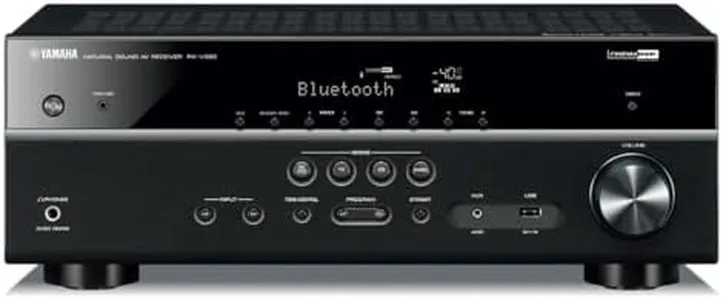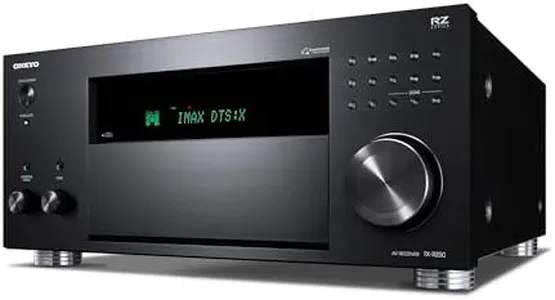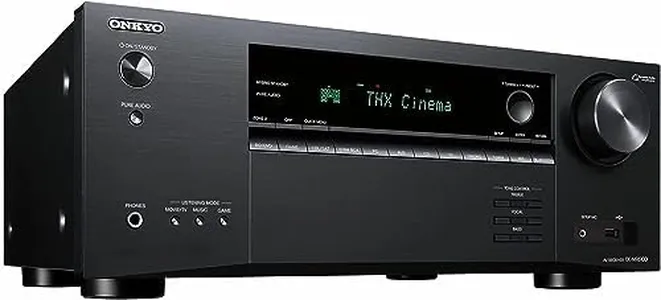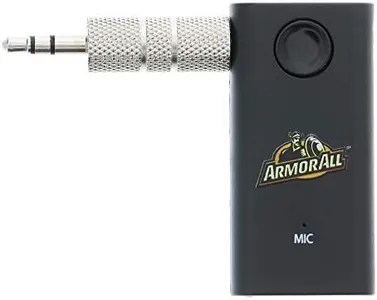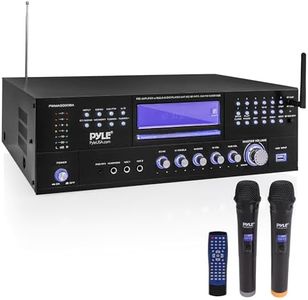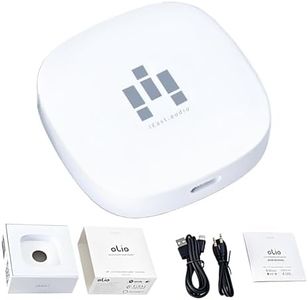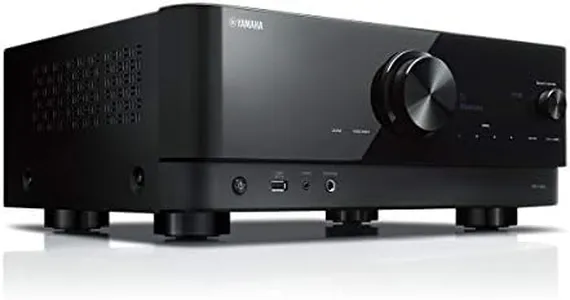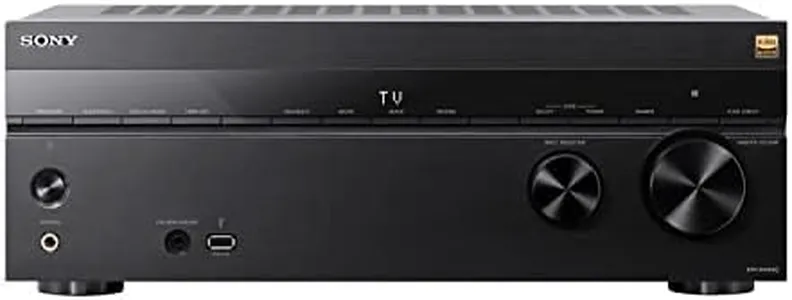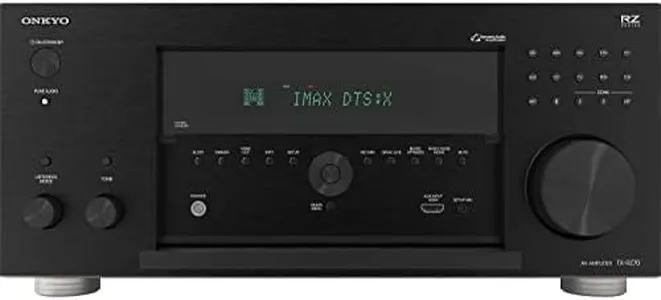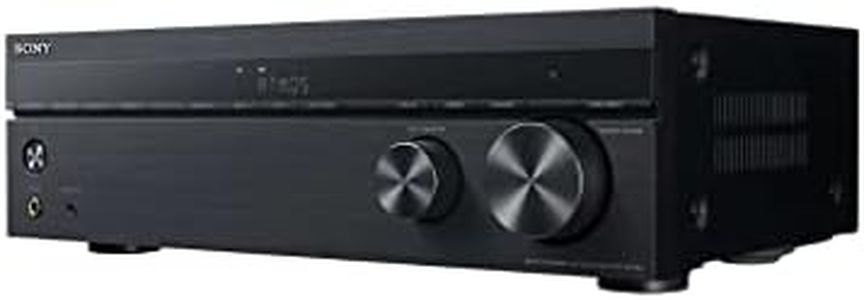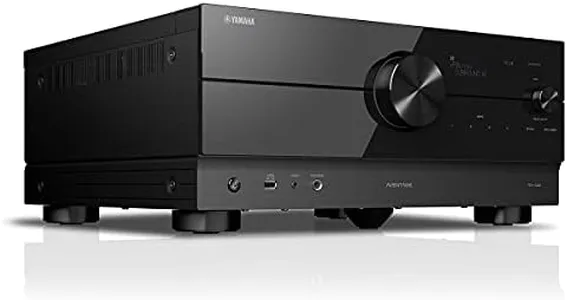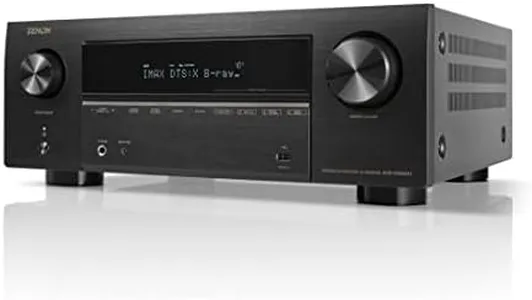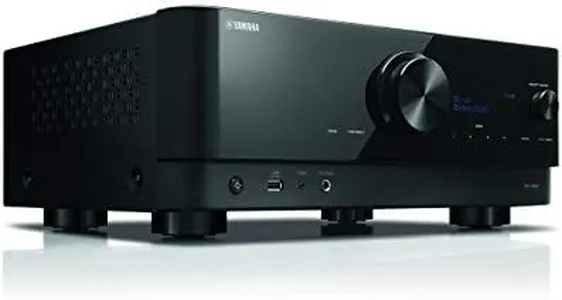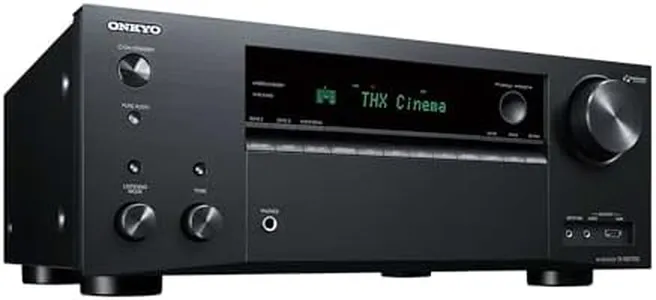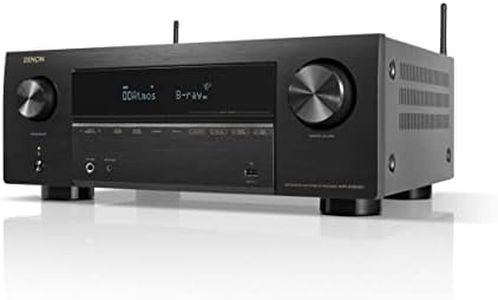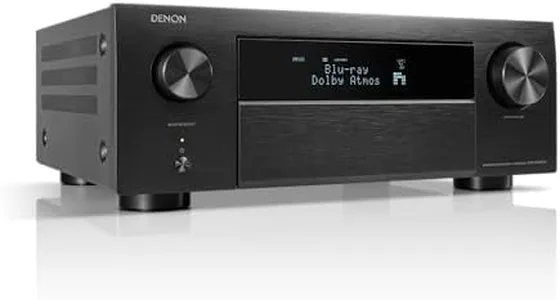10 Best Audio Receivers 2025 in the United States
Our technology thoroughly searches through the online shopping world, reviewing hundreds of sites. We then process and analyze this information, updating in real-time to bring you the latest top-rated products. This way, you always get the best and most current options available.

Our Top Picks
Onkyo TX-RZ50 9.2-Channel AV Receiver - 120 Watts Per Channel, Dirac Live Out of Box, Works with Sonos Certified, THX Certified and More
Most important from
568 reviews
The Onkyo TX-RZ50 is a 9.2-channel AV receiver that offers 120 watts per channel, making it a powerful option for home theater setups. It stands out with its Dirac Live room calibration, which ensures the best audio performance by automatically adjusting to your room’s acoustics. This feature is accessible via a smartphone or computer, though a third-party USB mic is required for the latter. Additionally, the receiver supports 11.2 channels of processing, allowing for advanced sound configurations and multi-room audio experiences, accommodating up to three independent zones with the help of Sonos integration. This makes it an excellent choice for larger homes or users who need versatile audio setups in multiple rooms.
The built-in streaming services and compatibility with popular platforms like Spotify and TIDAL ensure a seamless music experience. Moreover, the HDMI 2.1 compatibility means it’s ready for the latest video standards, supporting up to 8K60 resolution and 4K/120 for fast motion, making it suitable for high-performance gaming as well. The THX certification assures high-quality audio reproduction, maintaining the integrity of the source material.
However, this receiver could be overwhelming for someone new to AV equipment due to its extensive features and setup requirements. The Klipsch Optimize Mode and Dolby Atmos support add to its premium capabilities, ensuring an immersive sound experience. On the downside, at 37.1 pounds and relatively large dimensions, it requires ample space and a sturdy setup area. While it's a robust device with high customer ratings, it also carries a higher price point, which might not be ideal for budget-conscious users. In summary, the Onkyo TX-RZ50 is best suited for audio enthusiasts and those with a comprehensive home entertainment system looking for top-tier performance and extensive feature set.
Most important from
568 reviews
Buying Guide for the Best Audio Receivers
Choosing the right audio receiver can significantly enhance your home entertainment experience. An audio receiver acts as the central hub for your home theater system, connecting and managing all your audio and video components. To make an informed decision, it's important to understand the key specifications and how they align with your needs. Here are some essential specs to consider when selecting an audio receiver.FAQ
Most Popular Categories Right Now


